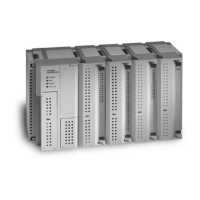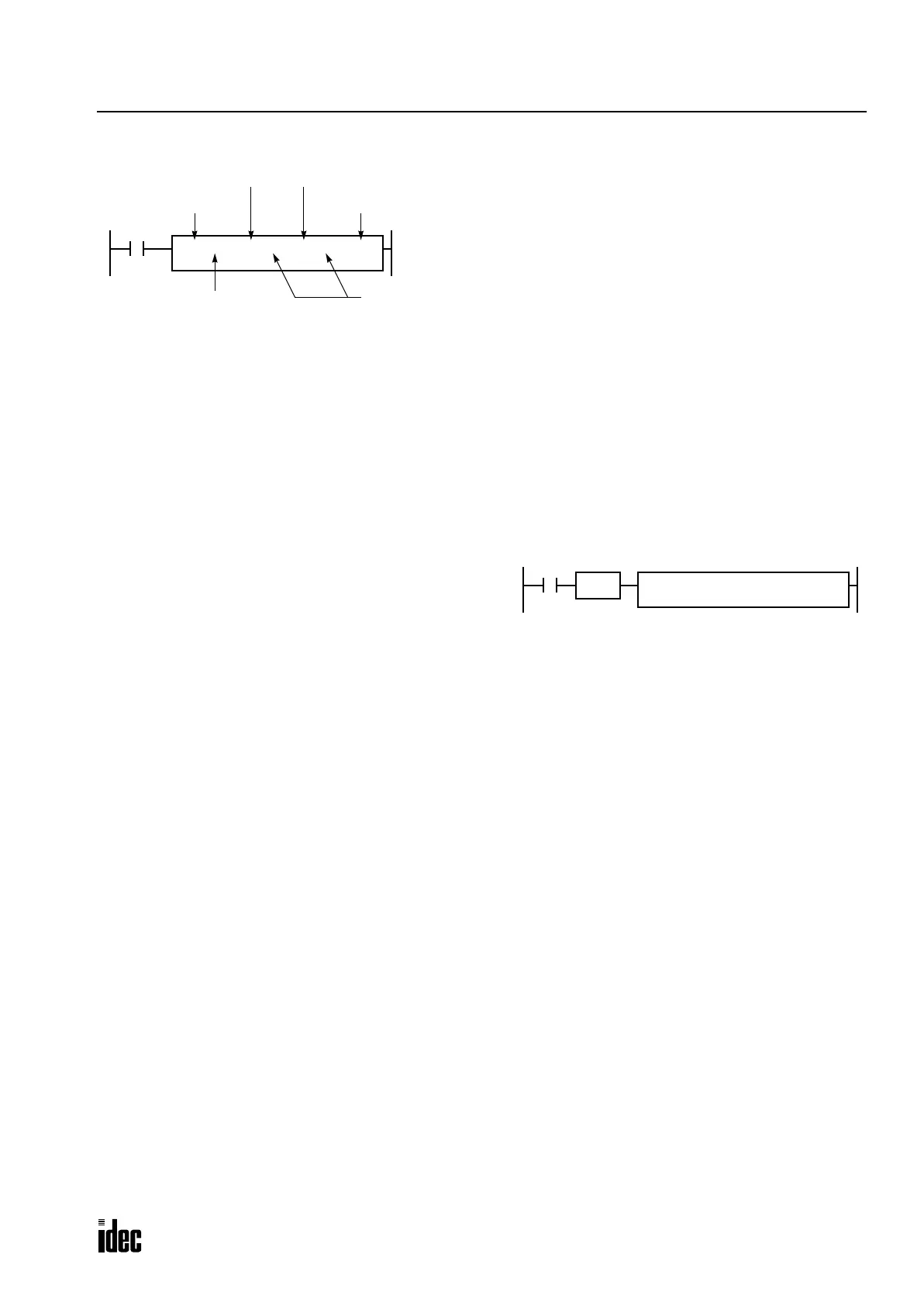8: ADVANCED INSTRUCTIONS
OPENNET CONTROLLER USER’S MANUAL 8-3
Structure of an Advanced Instruction
Input Condition for Advanced Instructions
Almost all advanced instructions must be preceded by a contact, except NOP (no operation), LABEL (label), and LRET
(label return) instructions. The input condition can be programmed using a bit operand such as input, output, internal relay,
shift register, or link register bit. Timer and counter can also be used as an input condition to turn on the contact when the
timer times out or the counter counts out.
While the input condition is on, the advanced instruction is
executed in each scan. To execute the advanced instruction
only at the rising or falling edge of the input, use the SOTU
or SOTD instruction.
While the input condition is off, the advanced instruction is not executed and operand statuses are held.
Source and Destination Operands
The source and destination operands specify 16- or 32-bit data, depending on the selected data type. When a bit operand
such as input, output, internal relay, or shift register is designated as a source or destination operand, 16 or 32 points start-
ing with the designated number are processed as source or destination data. When a word operand such as timer or counter
is designated as a source operand, the current value is read as source data. When a timer or counter is designated as a des-
tination operand, the result of the advanced instruction is set to the preset value for the timer or counter. When a data reg-
ister is designated as a source or destination operand, the data is read from or written to the designated data register.
Using Timer or Counter as Source Operand
Since all timer instructions—TML (1-sec timer), TIM (100-msec timer), TMH (10-msec timer), and TMS (1-msec
timer)—subtract from the preset value, the current value is decremented from the preset value and indicates the remaining
time. As described above, when a timer is designated as a source operand of an advanced instruction, the current value, or
the remaining time, of the timer is read as source data. Adding counters CNT start counting at 0, and the current value is
incremented up to the preset value. Reversible counters CDP and CUD start counting at the preset value and the current
value is incremented or decremented from the preset value. When any counter is designated as a source operand of an
advanced instruction, the current value is read as source data.
Using Timer or Counter as Destination Operand
As described above, when a timer or counter is designated as a destination operand of an advanced instruction, the result
of the advanced instruction is set to the preset value of the timer or counter. Timer and counter preset values can be 0
through 65535.
When a timer or counter preset value is designated using a data register, the timer or counter cannot be designated as a des-
tination of an advanced instruction. When executing such an advanced instruction, a user program execution error will
result. If a timer or counter is designated as a destination of an advanced instruction and if the timer or counter is not pro-
grammed, then a user program execution error will also result. For details of user program execution error, see page 27-6.
Note: When a user program execution error occurs, the result is not set to the destination.
Repeat Designation
Specifies whether repeat is used for the operand or not.
Repeat Cycles
Specifies the quantity of repeat cycles: 1 through 99.
I0
S1 R
*****
REP
**
D1 R
*****
Opcode
The opcode is a symbol to identify the advanced instruction.
Data Type
Specifies the word (W), integer (I), double word (D), or
long (L) data type.
Source Operand
The source operand specifies the 16- or 32-bit data to be
processed by the advanced instruction. Some advanced
instructions require two source operands.
Destination Operand
The destination operand specifies the 16- or 32-bit data to
store the result of the advanced instruction. Some advanced
instructions require two destination operands.
Opcode
Source Operand
Repeat Cycles
Destination Operand
Repeat
MOV(W)
Data Type
Designation
I0
REPS1 –
D10
D1 –
D20
SOTU
MOV(W)
Phone: 800.894.0412 - Fax: 888.723.4773 - Web: www.clrwtr.com - Email: info@clrwtr.com

